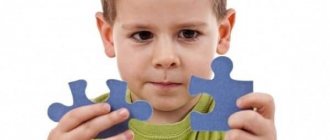The concept of communication and its role in the development of humanity
The psychology of communication is a huge layer of theoretical and practical knowledge accumulated thanks to the work of many psychologists and sociologists. Scientists have identified and continue to study the features, types, forms and structure of communication.
There are many theories and points of view on communication problems. Soviet scientists made a significant contribution to the study of this phenomenon, as well as to social psychology in general. Their experiments and experiences, carried out in the middle and second half of the last century, became classic examples of the peculiarities of communication and people’s perception of each other, as well as the scientific basis for subsequent scientific research.
Interpersonal and intergroup interaction is the area of human activity in which psychological difficulties most often arise. It is extremely important for every person to be able to interact competently and effectively with the people around them.
Communication is a mutual action of two or more people with the goal of exchanging information, as well as a necessary component of work, educational, and play activities.
In addition, it can act as a separate, relatively independent occupation. After all, people do not always talk to each other with the goal of inventing, controlling, and carrying out a joint action.
The transmitted verbal or nonverbal signal can be both informational and affective-evaluative in nature. It is believed that it was the need of our distant ancestors to transfer knowledge to each other, not only through signs and shouts, that served as the main reason for the development of human speech. Animals interact with each other, but speech is unique to humans.
The characteristics of communication between different people and groups depend on the extent to which the subjects of interaction have a pressing need for social contacts. The need to be involved, to belong and to interact developed in the process of phylogenesis, the socio-historical development of humanity.
Interestingly, satisfying the need for social contact supposedly led to the birth of such a wonderful feeling as joy. Joy is still the leading motive that motivates people to interact with each other.
Features of communication that can bring pleasure and joy are its humanity and democracy. Rude, disrespectful interaction, ignoring and manipulation are immoral and do not fit into the principles of communication that usually guide a cultured person.
PRINCIPLES OF COMMUNICATION:
- self-esteem;
- respect for the interlocutor, recognition of his rights and interests;
- tolerance, tolerance;
- justice, honesty;
- unbiased attitude towards people.
Features of communication processes
In the communicative structure of communication, the main emphasis is on the exchange of information. The interactive part involves the exchange of actions and experiences in them. In this case, not only the transfer of information itself occurs, but also its further development and clarification. People mutually influence each other, but this is only possible if the codification systems of both the human communicator and the recipient coincide.
A side aspect of communication is the emergence of various specific communication barriers.
The main goal of interactive communication is to satisfy needs, as well as implement an idea or a specific plan. Interaction can be different, both positive (cooperation, association, agreement, adaptation) and negative, which leads to obstacles and prevents the construction of a full-fledged system for the exchange of information (competition, opposition, dissociation, conflict).
Perceptual communication is the process of getting to know each other. Interlocutors strive to establish rapport in various ways to improve their communication.
In the process itself, a person acts as a subject and object of interpersonal perception, and this is influenced by various factors:
- gender differences between subjects (women better understand the emotional states of the interlocutor, his strengths and weaknesses, and men are able to quickly determine intelligence);
- temperament (introverts find it easier to assess their interlocutor, while extroverts can more accurately identify the emotional state of their interlocutor);
- age;
- social intelligence (the better developed general and social knowledge, the easier it will be to establish contact and evaluate the interlocutor);
- physical differences;
- health status;
- value orientations.
In addition to these factors, other settings of the communication structure are also taken into account, which previously influenced previous assessments of objects of perception and the level of socio-psychological competence of objects:
- physical appearance (height, weight, skin color, build);
- functional characteristics (age, posture, gait and postures used);
- speech characteristics (facial expressions, movements, body language used, phonetics);
- the relationship between the object of perception and the subject;
The interaction between interlocutors and their willingness to make contact have a direct effect on the process of understanding.
The importance of communication in ontogenesis
In ontogenesis (individual human development), the role and characteristics of communication are no less important than in phylogenesis. The development of an individual is impossible without interaction with other people.
Newborn babies, not knowing how to speak, already react to the voice and affection of an adult, and later begin to smile back at him. Later, the so-called revitalization complex appears - the first form of interaction of a new person with his own kind.
Forms of communication that arise in the process of ontogenesis:
- Directly emotional
When a baby develops a revival complex, he does not yet interact with his parents as an equal partner, but expresses his attitude through facial expressions and gestures: he cries and laughs, is surprised and frightened, and so on. Such forms of communication are characteristic of infants up to the first year of life.
- Subject-effective
The child interacts with people by manipulating objects and playing. The baby extends his hand when he wants to take or give something, and understands that in order to establish contact he needs to get closer to the person. This form of interaction undergoes significant changes, but is generally maintained during the first six years of life.
- Extra-situational intimate-personal
It appears by the end of preschool age, but the main forms of this communication develop already in the puberty period (puberty).
Forms of communication undergo changes as an individual grows and matures; they are combined and complemented differently in different individuals.
Without a child's contact with adults, he will not be able to develop as a person. The importance and necessity of communication between a child and his parents cannot be overestimated. Relationships with parents are the foundation, guideline and measure by which all subsequent connections of a person with people, society, and himself will be measured.
Correctly chosen methods of communicating and raising a child are the key to his successful socialization and self-realization.
Types and forms of communication are formed especially intensively in adolescence. This is the age of active interaction with peers, the time of first love and the formation of the self-concept.
The teenager’s activities become multifaceted, the content of communications and actions is enriched. A qualitatively new level of forms and types of interaction between young people contributes to the development of awareness, responsibility, independence and personality as a whole.
The structure of communication affects the structure of personality. Violation or lack of interaction with people invariably leads to a transformation of the individual’s “I”. Personality changes that are not for the better (including pathological ones) cannot but affect the ability to interact and understand other people and oneself.
Three sides of communication
The structure of communication conditionally divides it into three processes that are interconnected and interdependent:
- Social perception - the perception of an interaction partner
People perceive each other through their senses, evaluate their appearance, speech, behavior and draw conclusions about the possibility of continuing social contact. The first impression is especially important. How another person is perceived for the first time, when meeting for the first time, influences the willingness to exchange information and interact with him.
- Communication – exchange of information
Contacts are meaningless if people do not know how to convey the necessary information, knowledge and experience to each other verbally and non-verbally.
- Interaction – exchange of actions
A conversation without the ability to perform actions that affect the interlocutor and exchange actions with him would be ineffective and ineffective.
Communication structure
There are three interrelated sides of communication: the communicative side of communication consists of the exchange of information between people; the interactive side - in organizing interaction between people: for example, it is necessary to coordinate actions, distribute functions or influence the mood, behavior, beliefs of the interlocutor; the perceptual side of communication is the process of perceiving partners in communication and creating mutual understanding on this basis.
Communication facilities include:
Language is a system of words, phrases and rules for combining them into meaningful statements used for communication. Words and rules for their use are the same for all speakers of that language, which makes communication through the language possible. When I say “table,” I am sure that each of my interlocutors associates this word with the same concept as I do - this objective social meaning of the word can be called a sign of language. But the objective meaning of a word is refracted for a person through the prism of his own activity and already forms its personal, “subjective” meaning, so we do not always understand each other correctly.
Intonation, an emotional expression that can give different meanings to the same sentence.
The facial expression, posture, and gaze of the interlocutor can strengthen, complement or refute the meaning of the sentence.
Gestures as a means of communication can be either general, that is, have a fixed meaning, or expressive, that is, serve to increase the expressive capabilities of speech.
The distance with which interlocutors communicate depends on cultural, national traditions and the degree of trust in the interlocutor.
Description of communication models
The structure of communication determines the patterns of communication. Some people are more sociable, love to be in company and can talk for hours about nothing, while others are closed, prefer internal dialogues to external ones, talk little and only about business.
Sociability as a character trait develops, you can improve communication skills, the ability to objectively perceive people and interact effectively with them.
Communication patterns, as a rule, are formed in childhood or adopted from parents. Also, communication patterns can be determined by the specifics of the position held and even be a sign of professional deformation of the individual (for example, a teacher communicates with relatives, as well as with students).
COMMUNICATION MODELS:
- "Mont Blanc". Aloof, cold interlocutor. He focuses on the communicative side of interaction; he is not interested in interactions.
- "Chinese Wall". A person who considers himself higher and more significant than others. Perceives others as less successful/beautiful/smart people, which makes it difficult to interact with him.
- "Locator". A person who chooses a narrow circle of friends. Often one loved one or close friend is enough for him.
- "Grouse". A very uncommunicative person who creates only the appearance of communication and interaction. At the same time, the structure of Teterev’s internal communication with himself is preserved and oversaturated with dialogues and introspection.
- "Hamlet". Social perception is extremely important for this type of communication model. He tries to make the best impression, which is why he often plays to the public.
- "Robot". This person talks and acts “dryly”, unemotionally, always knows what, when and why to do or not to do.
- "Egoist". A person speaks only about himself, all his actions are aimed at obtaining personal gain.
- "Ally". The best form and type of communication, as it is two-way. The interlocutors are interested in productive interaction, take into account personality, strive to understand each other and come to an agreement.
Description of types of communication
The concept of “type of communication” is close to the concept of the model. Types of communication, as well as models, are used to indicate the characteristics of communication.
Types of communication:
- Mentorsky. With this type of communication, a person constantly teaches, instructs, and subjugates his interlocutor.
- Informative. A type of communication that is simply a relay of information, without the ability or desire to receive feedback.
- Inspiring. The individual participates in the fate of the interlocutor, supporting him, guiding him, helping him, advising him. With this type of communication, there is a productive dialogue, cooperation, and mutual assistance between the subjects of the relationship.
- Confrontational. Unlike other forms of communication, it involves discussion, dialogue with an opponent, constructive criticism with the goal of finding the truth through confrontation between personal subjective and objective views, reality.
Types of communication are needed in order to be able to select the most appropriate methods of communication in different situations: persuasion, suggestion, infection, request, coercion, ignoring and even manipulation.
Components of communication and its varieties
Components of communication are those components that are not included in the structure of communication.
These include:
- content,
- target,
- facilities,
- subjects (participants of interaction),
- type of connection between subjects,
- style,
- tactics,
- techniques, methods,
- result.
Depending on the components, various types and forms of communication are distinguished:
- emotional – exchange of emotions;
- cognitive – knowledge sharing;
- activity - exchange of skills and abilities;
- motivational – exchange of desires and goals;
- material – exchange of objects or products.
Types of social interaction can be defined as its levels. Level – certain behavioral manifestations of a personality that allow us to draw conclusions about a person and the ways of his interaction with other people. The types and levels of communication change as it becomes more complex from simple, primitive to complex, spiritual.
Types of communication barriers
When expressing his opinion or communicating important information, a person hopes that his interlocutors will understand his words correctly.
But this doesn't always happen. There are so-called semantic or communication barriers - psychological obstacles that prevent the understanding of information transmitted between participants. The components of communication include barriers of three types: understanding, socio-psychological differences and relationships. There are several barriers to understanding:
- phonetic - inexpressive, monotonous speech, unclear pronunciation of words, accelerated rhythm, abundance of filler words;
- stylistic - inconsistency of the chosen style with the situation or the state of the interlocutor;
- semantic - differences in the vocabulary of participants, possible misunderstanding due to the polysemy of words;
- logical - when the partner does not see a logical connection between statements or considers some statements absurd.
Social and psychological barriers arise in the case of similar differences between interlocutors. Includes religious, social and professional differences. May lead to the development of a conflict situation.
The relationship barrier depends on the attitude of the participants in the conversation towards the speaker. If his authority is high enough, the barrier will disappear, and all the information said will be learned correctly.










